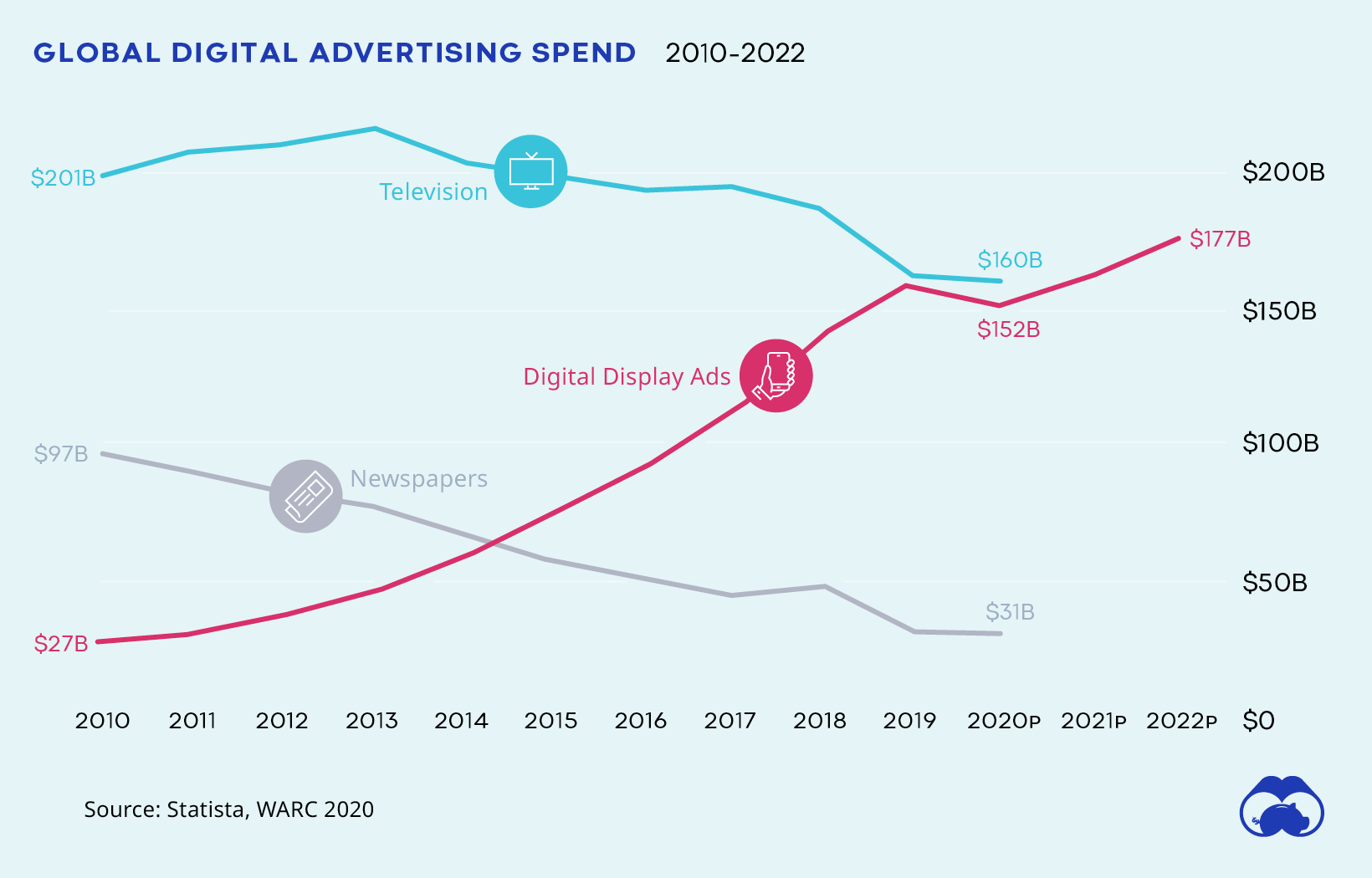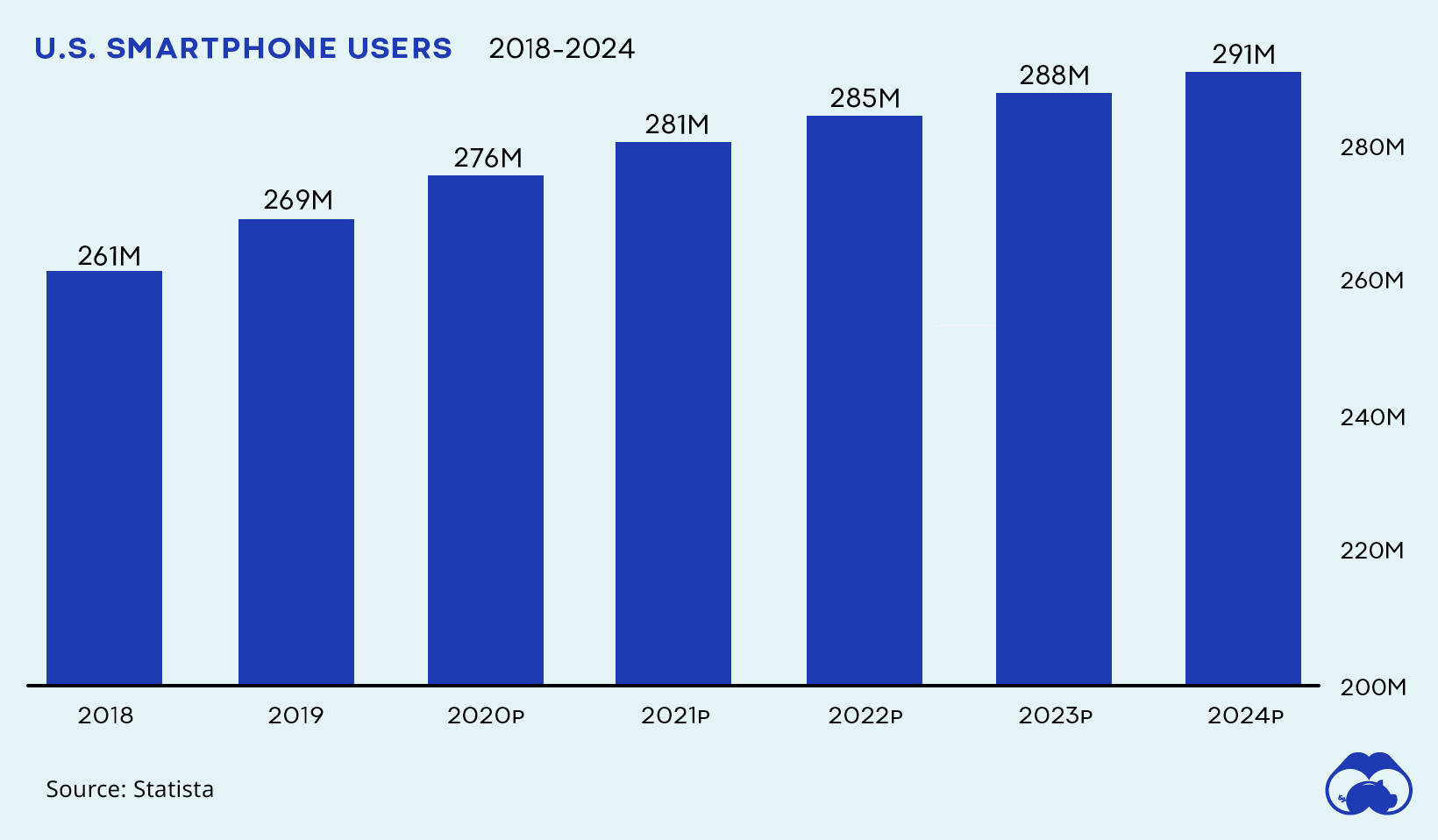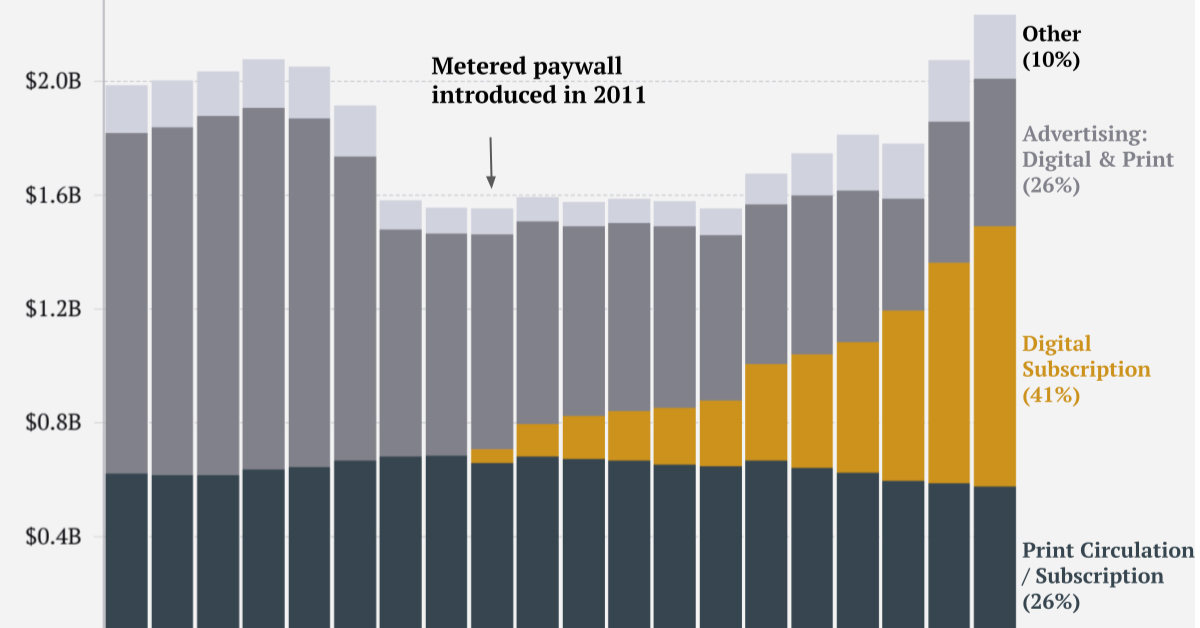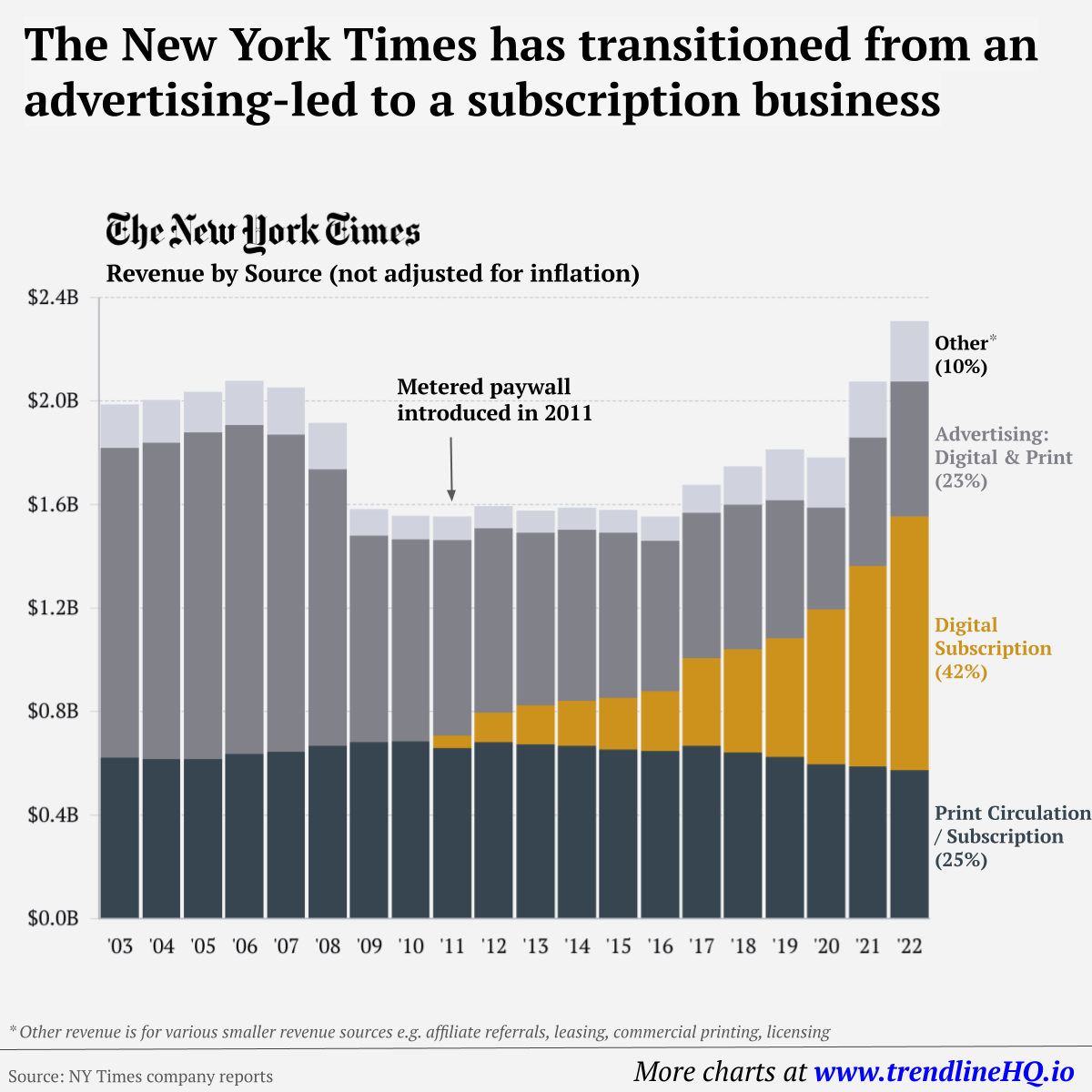In the above infographic from Raconteur, we can take a closer look at how global advertising spend has evolved over recent decades across the media sphere.
The Media Landscape Shapes the Ad World
In advertising, dollars go where the eyeballs are. Recently, all eyes have been on the digital realm—a trend that coincided with the disastrous fall of the print industry. As people mass-migrated to digital platforms in the 2010s, marketers were hot on their heels, and the fall of print media began. In 2014, TV ad spend met a similar fate, peaking at nearly $250 billion. However, despite its rather sharp decline, TV still remains the largest in terms of global advertising spending. The demise of the newspaper is shown dramatically in the above graphic, beginning in 2007 before the financial crisis, and correlating with the ascent of search engine ad spend. Peaking at $125 billion before the social media boom, newspaper advertising has never recovered.
Winners in a Digital World
In less than five years, internet ad spend nearly doubled: $299 billion was spent on global internet advertising in 2019 compared to $156 billion in 2015. Reaching $160 billion in one year, digital display advertising—a broad category including banner ads, rich media, advertorial and sponsorship, online video and social media—accounted for the largest global ad expenditure in 2019. Comparing all digital display ad spend in isolation with TV and newspaper, we can see the continued significance of the shift to digital, and how it’s projected to continue.
Looking at the main visualization, it’s clear that budgets have shifted, with digital channels now accounting for more than half of total advertising spend. Although digital spending is up across the board, search engine ad spend began to plateau in the late 2010s, while social and ecommerce mediums both continue to rise. Impressively, between 2012 to 2020, the percentage of U.S. senior marketing budgets allocated to social media more than doubled, ballooning from almost 9% to nearly 21%. – Malorie Lucich, Head of Product & Tech Communications, Pinterest Advertisers aren’t the only ones spending money online. More than $183 billion is expected to be spent online by consumers as a result of the 2020 pandemic.
Screen Life: Time is Ad Money
It’s not only that people have shifted their focus from analog to digital. They are also spending many of their waking hours in front of a screen.
Adults in the U.S. spend an average of 11 hours a day in front of a screen, and the ad dollars that vie for our digital attention are also rising. Globally, the daily average of time spent online was almost 7 hours during the pandemic, up from 3.2 hours at the beginning of lockdowns.
As a result of COVID-19 lifestyle shifts, time spent watching digital video is expected to increase. According to eMarketer, digital video spiked among UK adults during the pandemic—to 2.75 hours, and almost by 30 minutes daily in total video and TV screen time.
Smartphone Boom: From Big Screens to Small
Social media and digital ad spend also corresponds with a steady uptick in global smartphone ownership and usage. In February of 2019, for instance, 81% of U.S. residents owned a smartphone. By 2024, it’s expected that 291 million Americans (almost 90%) will be using a smartphone.
In China, smartphone usage has almost doubled in 5 years—and is predicted to surpass 3.4 hours a day by 2022. Statista estimates there will be 1.13 billion smartphone users in China by 2025, making up nearly 14% of the world’s population by 2025. As billions of users spend hundreds of hours with their small screens every year, it’s possible that mobile-based ad spend—including uber-popular apps like TikTok—will become even more commonplace.
The Digital Future is Now
As a result of the pandemic, it is projected that global advertising spending could fall by 8.1% this year. However, 53% of all global ad spend is expected to flow online. And the rise of search, social media, video, ecommerce—in contrast to TV and print—becomes clearer. Although search ad spend recently plateaued, its rise over the last decade has been dramatic. With digital content consumption doubling since the pandemic began, the growth of social, e-commerce, and search ad spend are likely to continue. If these trajectories are any indication, advertising budgets will only be getting more digital. on Similar to the the precedent set by the music industry, many news outlets have also been figuring out how to transition into a paid digital monetization model. Over the past decade or so, The New York Times (NY Times)—one of the world’s most iconic and widely read news organizations—has been transforming its revenue model to fit this trend. This chart from creator Trendline uses annual reports from the The New York Times Company to visualize how this seemingly simple transition helped the organization adapt to the digital era.
The New York Times’ Revenue Transition
The NY Times has always been one of the world’s most-widely circulated papers. Before the launch of its digital subscription model, it earned half its revenue from print and online advertisements. The rest of its income came in through circulation and other avenues including licensing, referrals, commercial printing, events, and so on. But after annual revenues dropped by more than $500 million from 2006 to 2010, something had to change. In 2011, the NY Times launched its new digital subscription model and put some of its online articles behind a paywall. It bet that consumers would be willing to pay for quality content. And while it faced a rocky start, with revenue through print circulation and advertising slowly dwindling and some consumers frustrated that once-available content was now paywalled, its income through digital subscriptions began to climb. After digital subscription revenues first launched in 2011, they totaled to $47 million of revenue in their first year. By 2022 they had climbed to $979 million and accounted for 42% of total revenue.
Why Are Readers Paying for News?
More than half of U.S. adults subscribe to the news in some format. That (perhaps surprisingly) includes around four out of 10 adults under the age of 35. One of the main reasons cited for this was the consistency of publications in covering a variety of news topics. And given the NY Times’ popularity, it’s no surprise that it recently ranked as the most popular news subscription.
















